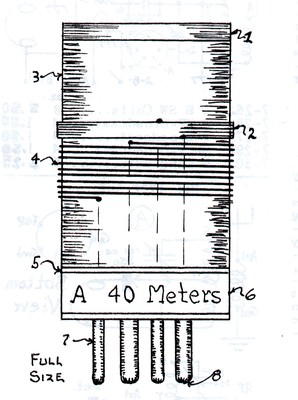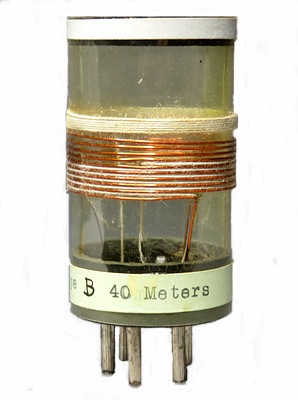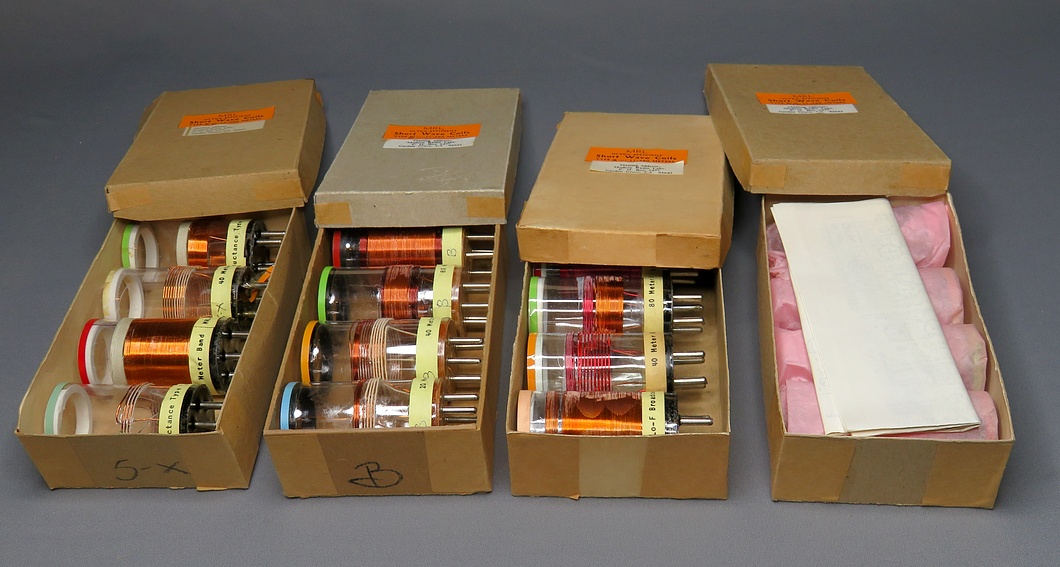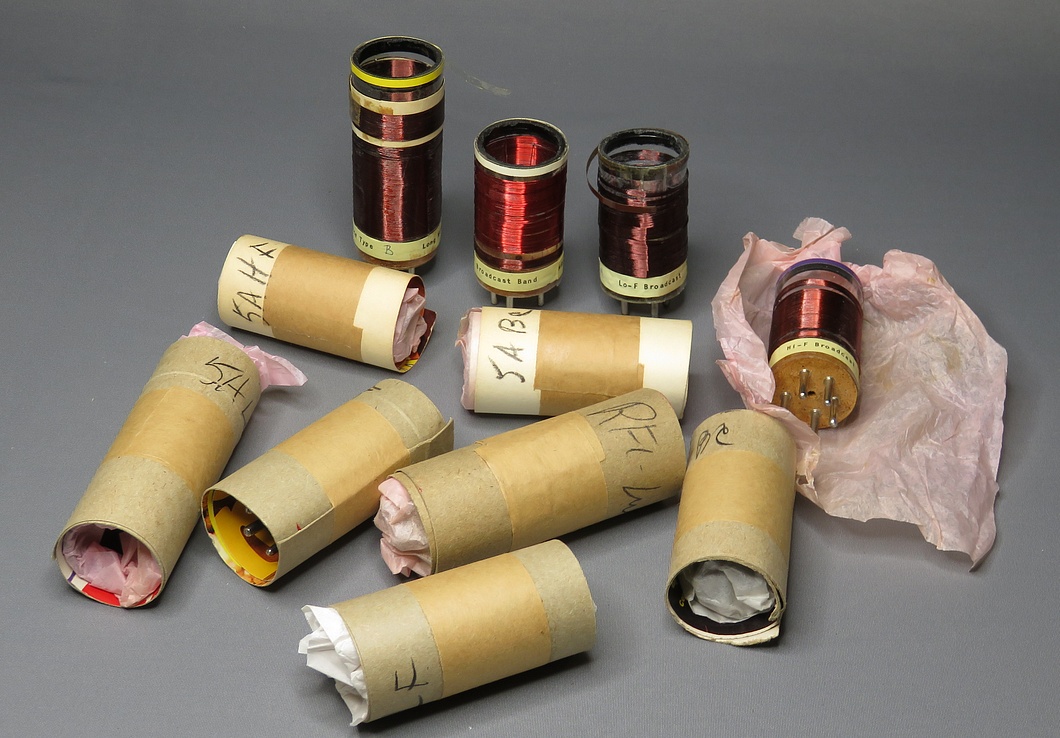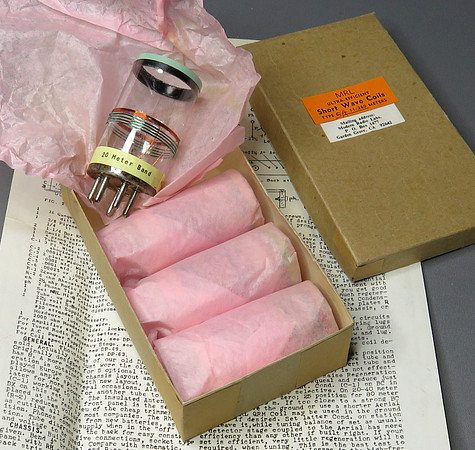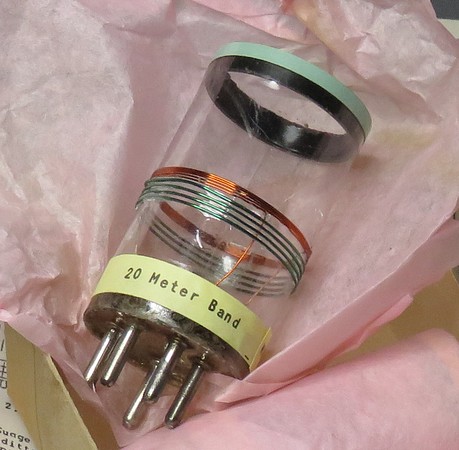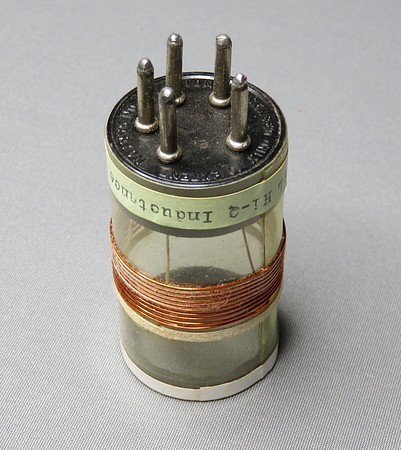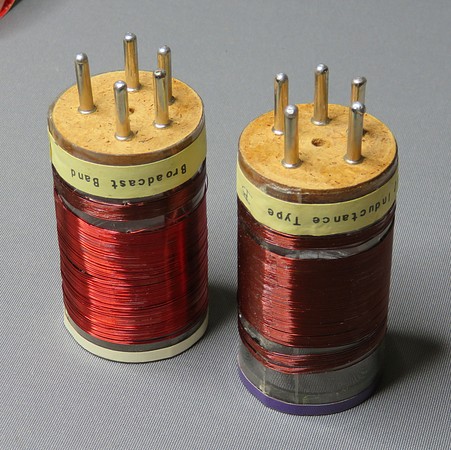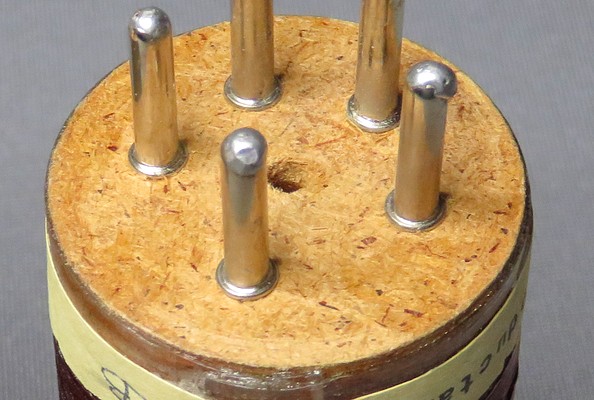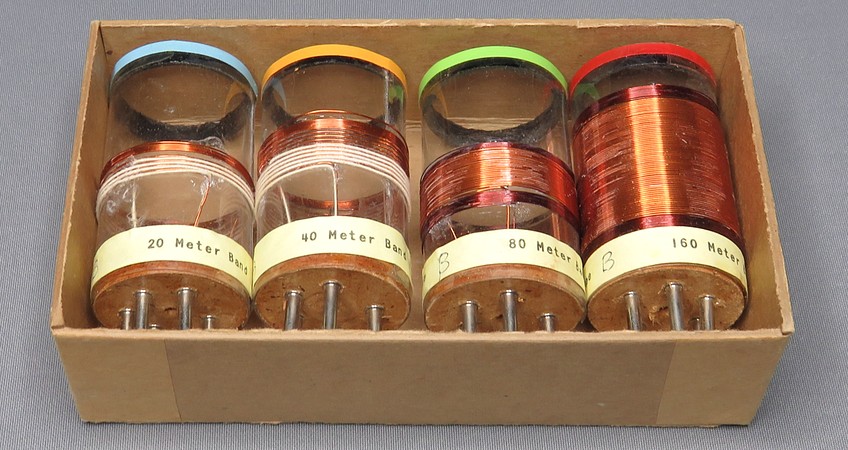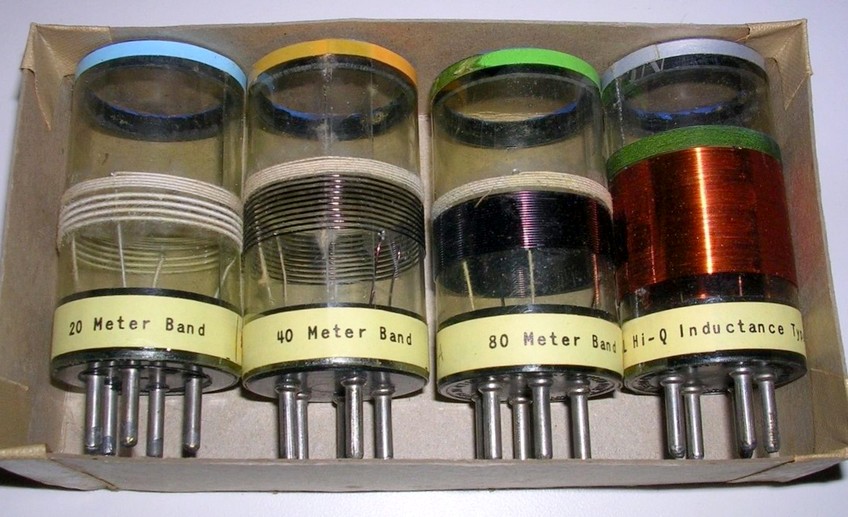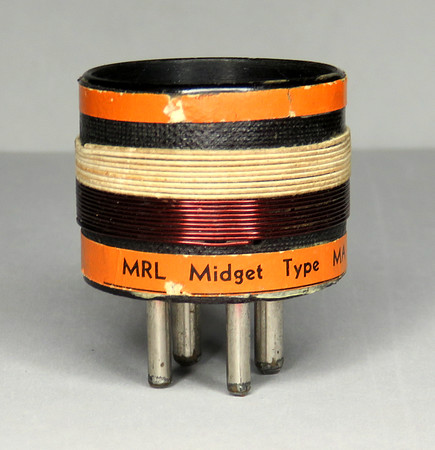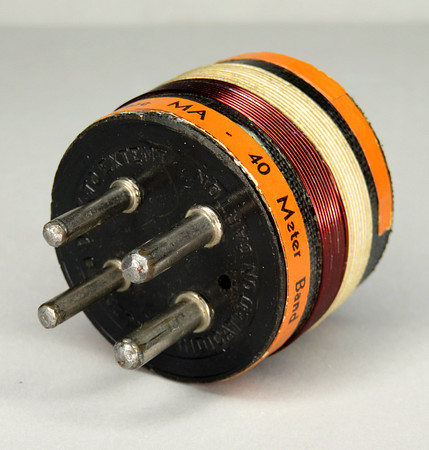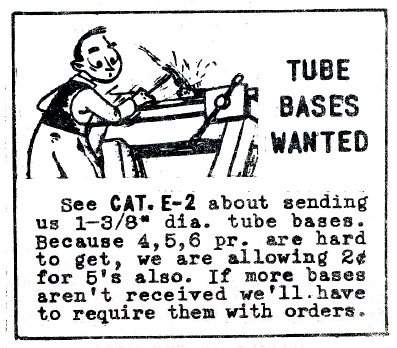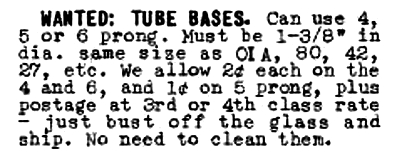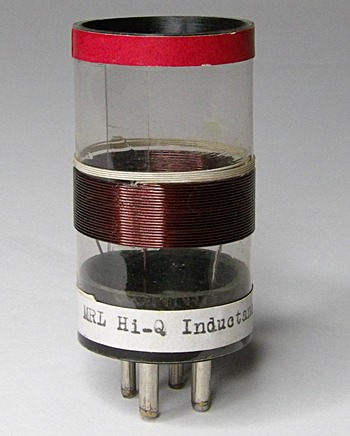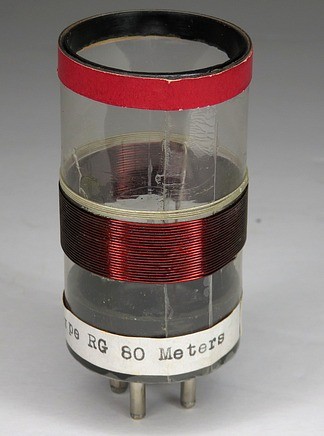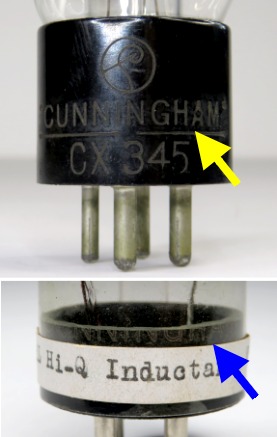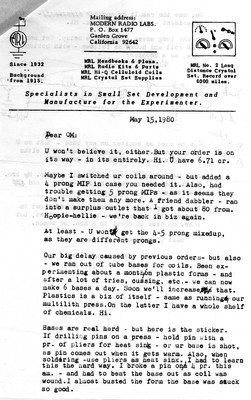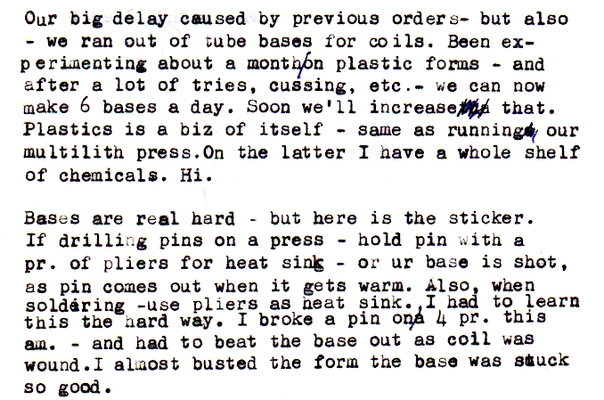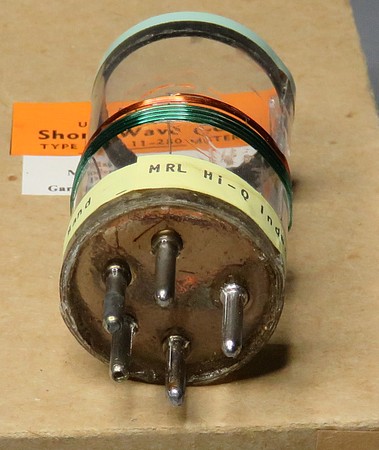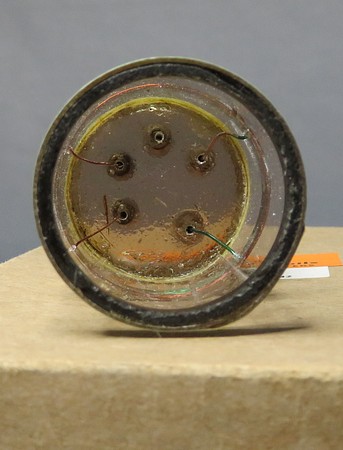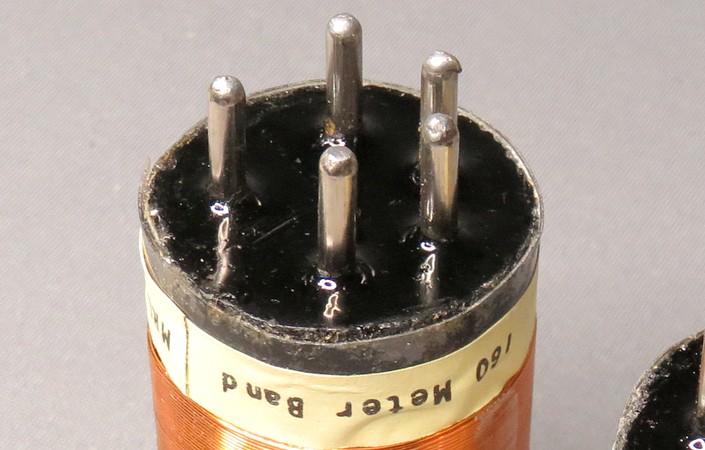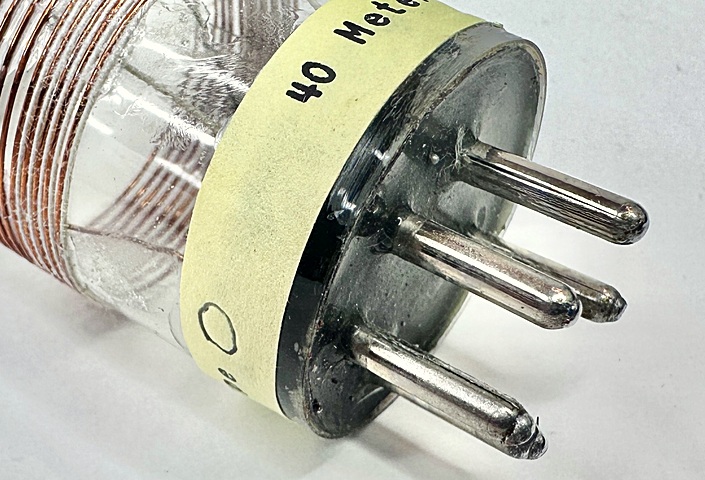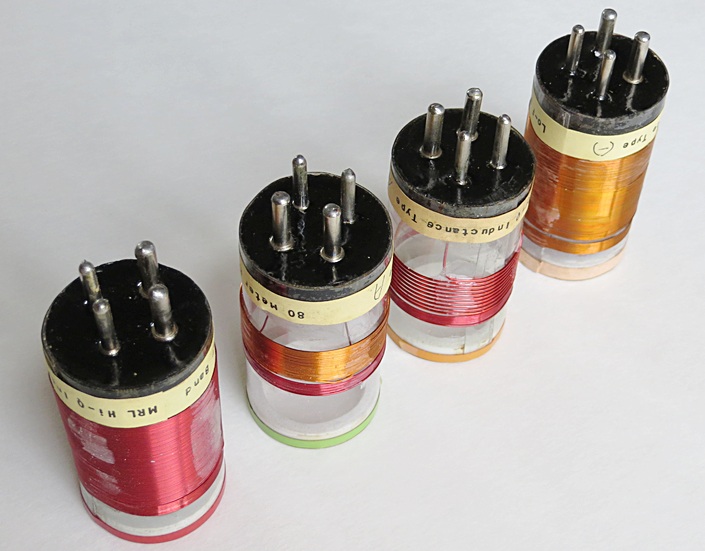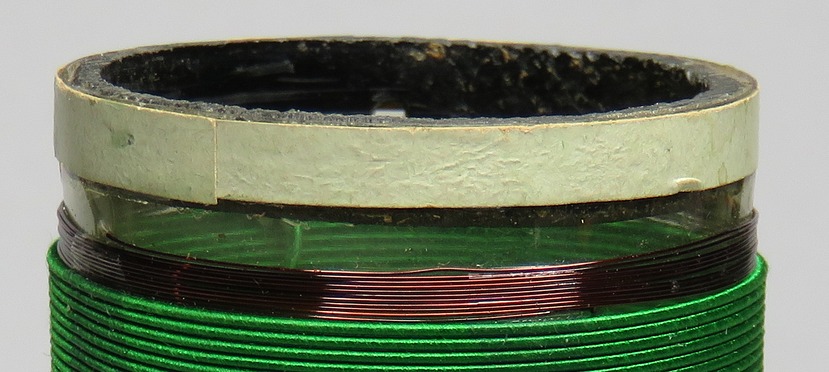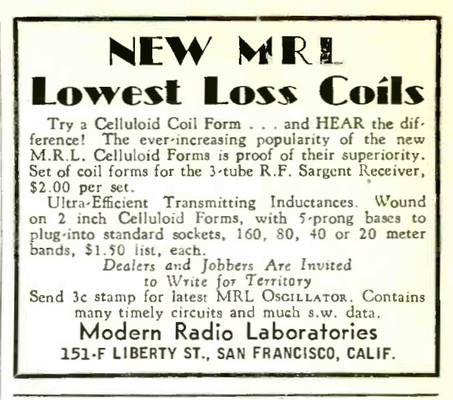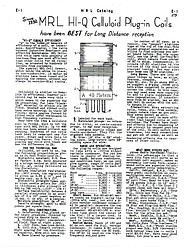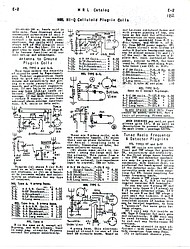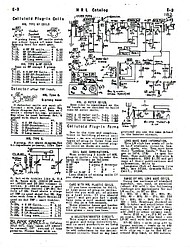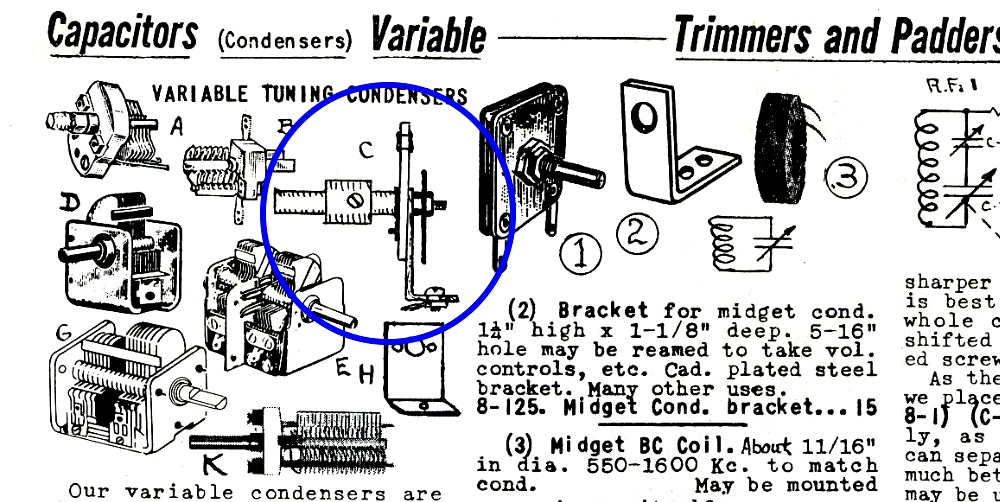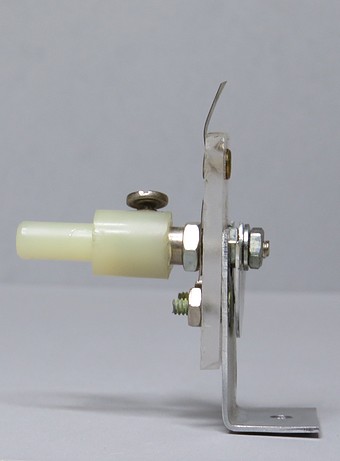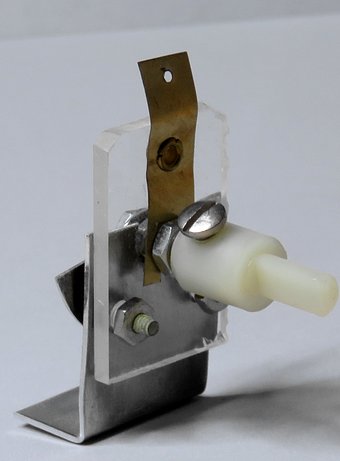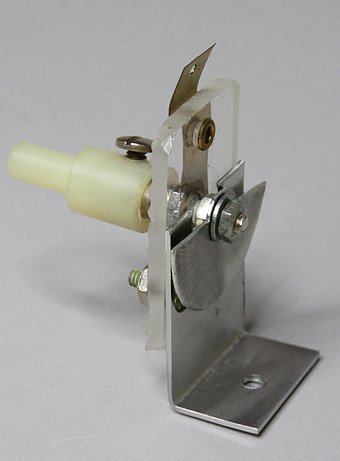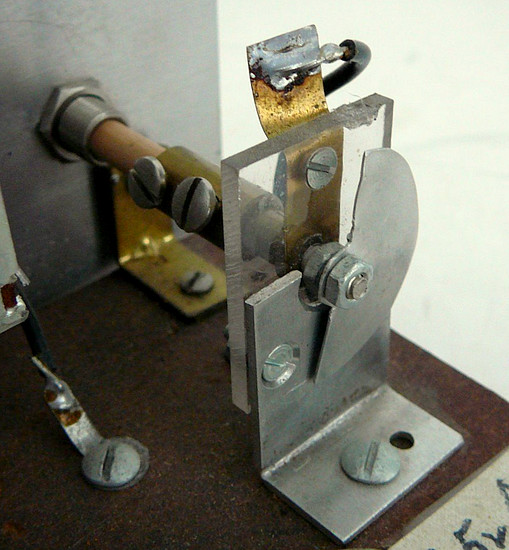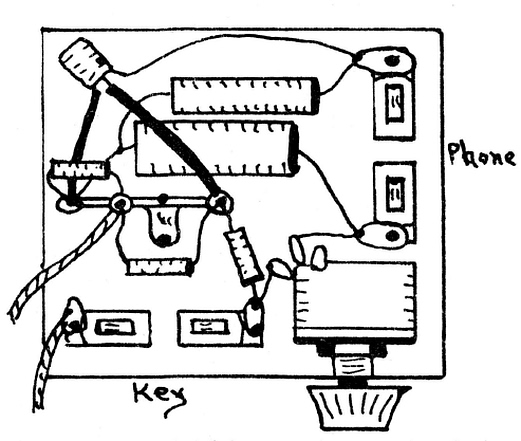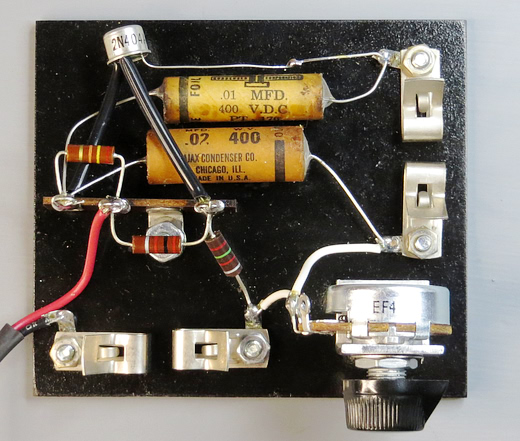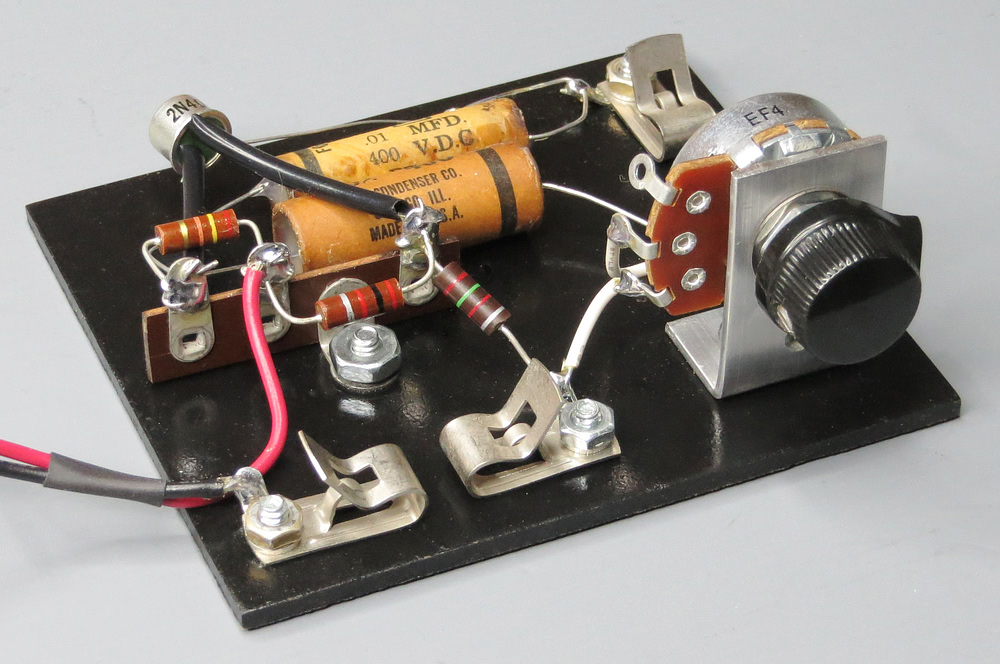|
|
|
|
|
|
MRL PLUG-IN COILS |
|
|
|
 |
|
|
|
|
|
|
|
In 1932 Elmer
moved his radio shop to 23rd Avenue in Oakland, California.
Formerly named Manchester Radio and Electric Shop, it
was now named Modern Radio Laboratories.
One day in 1932, he was in the shop experimenting with short
wave coils when he ran out of coil forms. He rigged up some
celluloid coil forms on tube bases. They worked so well he
made more of them, and apparently sold them out of the shop.
Don Wallace (W6AM)* became his factory representative. H. W.
Dickow, the former editor and advertising manager of
"Pacific Radio Magazine" and the business manager of "Radio"
magazine in the early 1930s, introduced Elmer to two factory
sales reps from New York and Chicago. They each covered 7
states. Soon, Elmer was making coils all day and half the
night - with no profit. He decided to sell them himself,
directly by mail. In 1933 the price was 25¢ for a coil.
* Don Wallace
of Long Beach California was first licensed in 1913 as 6OC.
When Elmer made his first crystal set in 1915, 6OC was
probably one of the stations he heard. In 1918 while in the
Navy, Wallace was at Goat Island in San Francisco as a
wireless operator. It's easy to see how Don Wallace and
Elmer Osterhoudt would have known each other, since Elmer
was a wireless operator at Alameda U.S. Naval Base in 1918.
Wallace was the most widely known ham radio operator in the
world by the time of his death in 1985. |
|
|
|
|
|
|
|
Elmer sold 45 different plug-in coils. Designated A,
B, C, E, O, 5A, 5C, 5X, MA, RF, RG and TRF. |
|
|
|
|
|
You had to buy a whole set of shortwave coils, but
coils that weren't for the short wave bands were sold separately. |
|
|
|
|
|
|
|
|
The last person to touch this coil was probably Mabel
Osterhoudt, after Elmer made it. I did not defile it by touching it
myself. |
|
|
|
|
|
| On the left is a very early coil with a
commercially made base and a label that has been printed
using a typewriter. When the bases became unavailable, Elmer
made his own, shown on the right. These labels were printed
with his lithograph machine. Information gleaned from "Radio
Flyer No. 23" suggests that coils with typewriter printed
labels were made prior to 1946. |
|
|
|
|
|
| This material is another mysterious
"Compo." that Elmer used. The hole in the center shows he
used a hole saw to cut this out. Normally, when you're
cutting a hole you're interested in the hole. Elmer was
interested in what came out of the hole. |
|
|
|
|
|
Imagine you are making these yourself.
You've purchased the pins, celluloid sheets and wire. You've
cut out the bases and drilled holes for the pins. You've
glued in the pins. You cut the celluloid sheet and make the
forms on a mold or jig, wind the coils (two or three
separate coils on each form), solder the wires to the pins,
reinforce the windings with coil cement, color code it with
tape, print a label, cut it out, and glue it on the coil.
How much would you charge for one of these?
In 1933 Elmer charged 25¢ for a
coil, $1.00 for a set of four. In 1955 he charged 75¢
for a coil, $3.00 for a set of four. In 1979 the
price was $1.25 for a coil; $5 for a boxed set of four.
Don't forget, you've got to make the box. If you bought a
set you got the hand-made box for free.
To keep up with inflation, you would have to charge $6.00
for a coil and $24.00 for a boxed set in 2025! |
|
|
|
|
|
|
|
A set of 5 pin coils made with repurposed tube bases.
Elmer adopted the color code used on the coils around 1957.
Prior to this he stated (in 1955) the colors were: 20 meters
- light blue, 40 meters - orange, 80 meters - red, 160
meters - yellow. In addition, broadcast band coils were
white, brown and yellow. At one point the colored strips on
the top were replaced with lacquer. |
|
|
| In 1975 Elmer ran out of double cotton
covered magnet wire. He complained that the price was $2.00
per 100 feet, so he wasn't going to stock it. (The MRL price
was 30¢ to 85¢ per 100 feet,
depending on the gauge.) By 1985 the coils were made
of enamel coated wire entirely, so his personal supply of
cloth covered wire had been exhausted. |
|
|
|
|
|
|
| This is an unusual coil of type "MA."
It's an "A" type with the letter M designating "Midget." The
coil itself (minus the pins) is exactly one inch high and is
wound on a vacuum tube base. They don't appear in the 1963 catalog or any other surviving publications. The
orange band on the top dates this as prior to 1957. |
|
|
|
|
|
|
A set of four.
|
|
|
|
|
|
|
|
|
|
|
|
|
|
|
|
|
This is a four pin 80 Meter coil, with a
red stripe. This dates it to pre-1957. What is interesting
is that half the word "CUNNINGHAM" can be seen on the base.
The part that was cut off is now the ring on the top of the
coil. The base is a re-purposed vacuum tube base. Cunningham
tubes with this logo etched on the base date from before RCA
bought the company in 1931. Click on
the right-hand photo.
Elmer was always on the lookout for these tube bases, and
asked his customers to send them in if they wanted a set of
coils. He would also buy them outright for 2¢
each. A burned out tube was just junk, and there were
millions of 4 and 5 prong vacuum tubes in millions of
radios, destined for town dumps. The 8 pin Octal tube base
was invented in 1936 and slowly the supply of 4 pin tube
bases dried up. Today a burned out four pin tube is a
display item. |
|
|
|
|
|
|
Here is an excerpt from a letter sent
with an order to Dick Knotts (W7HJR) of Warrington, Oregon
on May 15, 1980. (Elmer always sent a note with your order.
Also, at some point Elmer or Mabel started tracking the
orders. This letter came with order number 39,275.)
Elmer says he's been experimenting with plastics for a month
and can now make 6 coil bases a day. He also found the pins
come out of the base if they get too hot. The mystery of the
bent pins on some of Elmer's coils has just been solved!
|
|
|
|
|
|
|
| Is this an insight into Elmer's
personality? Who says, "Hoopie-hellie?" On
the other hand, MRL began with the creation of these
coils in 1932. With no sockets to plug them into,
and no tube bases to wind them on, he must have been
scrambling to find a solution. When a friend found
him 80 sockets, Hoopie-hellie he was back in
business! When he finally ran out of sockets in 1982
he began to make his own. |
|
| See the entire letter |
here. |
|
|
|
|
|
|
|
The plastic Elmer developed was transparent. |
|
|
|
|
|
By 1986 the plastic was black. How many formulations
did he make? |
|
|
|
|
|
After a half century Elmer was still making coils. He
was 87 years old. |
|
|
|
|
|
This set of coils was purchased in 1986 for use in
the MRL 1-TUBE DX ALL WAVE RECEIVER. |
|
|
|
|
|
With no tube bases available to cut down, the top
rings are made of 1¼ inch
PVC tubing. |
|
|
|
|
|
|
|
| Here's something interesting. Notice that
where the white tape strip ends, it's a different width.
This wasn't from a roll of skinny tape, it was cut by hand. |
|
|
|
|
|
|
Advertisement in "Radio" magazine, September, 1934.
151 Liberty Street in San Francisco is 15 miles from the radio shop
in Oakland. It was the address of Mabel's parents.
Elmer and Mabel lived there during the Great Depression. The store
was closed for the duration. |
|
|
|
|
|
|
Click on any picture for three pages of information
from the catalog about these coils, written by Elmer. |
|
|
|
|
MRL 2 PLATE ANTENNA CONDENSER |
|
|
|
|
|
|
In the MRL catalog, among the 3D perspective drawings
of variable capacitors, is Elmer's 2D drawing. |
|
|
|
|
The actual capacitor. In 1963 this was $1.50. By 1986
the price had increased to $2.00.
A MRL variable capacitor as used in a
MRL 1-Tube radio.
Why a hand-made capacitor? According to Handbook 12, "Radio
workbench Tips", Elmer states, "During the War, when
our metals were entirely cut off, we made hundreds of variable
condensers ....and what not from old radio scrap metals." |
|
|
|
|
MRL CODE PRACTICE OSCILLATOR |
|
|
|
|
$2.75 in 1963, it it remained the same price
for at least ten years. Sometime after 1973 the price
increased to $4.00. |
|
|
|
Replica made in 2025. |
|
|
|
|
|
|
An ad from "Radio" magazine, January 1934. This also
appeared in "Short Wave Craft" in February, 1934. |
The "MRL OSCILLATOR" is "Full of Bargains." Is
this the genesis of the MRL catalog?
NOTE: The word "dope" used here is slang for "information."
MRL stopped advertising the MRL OSCILLATOR in September of
1934. |
|
|
| |
|
|
| |



